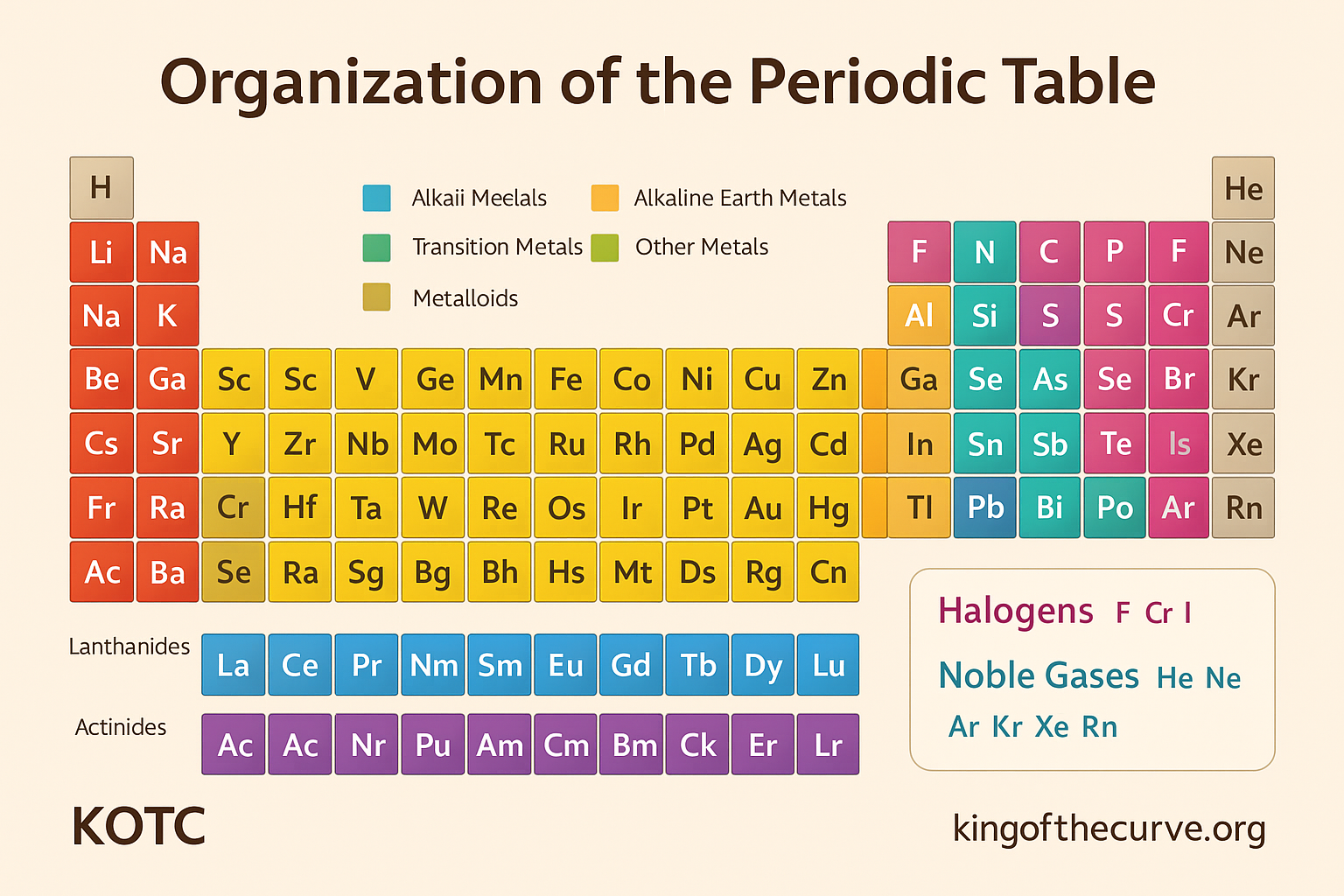
🧠 NCLEX Insulin Types, Onset, Peak, and Duration: Cheat Sheet for Nurses
Master insulin types for the NCLEX with this visual chart. Learn onset, peak, and duration for rapid, short, intermediate, and long-acting insulins.

🧬 How Eukaryotic Chromosomes Are Organized — From DNA to Chromosomes
Learn how DNA is packaged from double helix to duplicated chromosome. Use this KOTC visual to master chromatin structure for the MCAT.

🩺 How to Balance Sub-Internships and Step 2 CK Prep
Juggling a Sub-I and Step 2 CK prep? Learn how to manage both with efficient scheduling, KOTC tools, and actionable time-saving tips.

🧪 Master Periodic Trends for the DAT: Ionization Energy, Atomic Radius, Electronegativity
Understand how periodic trends affect ionization energy, atomic radius, and electronegativity—essential for DAT general chemistry. Visual breakdowns and DAT tips inside.

🧠 Blood-Brain Barrier: Structure, Function, and Clinical Relevance for USMLE Step 1
Learn how the blood-brain barrier works, what crosses it, and how its breakdown leads to classic Step 1 conditions. Visual aids and drug mnemonics included.

🧠 Pediatric Developmental Milestones for the NCLEX: Master the Must-Know Ages
Ace the NCLEX with this visual guide to pediatric milestones. Learn ages for walking, talking, fine motor skills, and more—all in one place.

⚽ Newton’s First Law of Motion: Explained with a Soccer Ball
Master Newton’s First Law with this soccer-themed KOTC visual guide. Perfect for MCAT physics prep. Learn how motion and force connect in a simple way.

🩺 How to Choose Your Medical Specialty: A Step-by-Step Guide for Students
Confused about which medical specialty fits you best? This guide helps you explore interests, assess lifestyle fit, and use tools like KOTC to guide your decision.

🧪 Buffers & Henderson-Hasselbalch
Learn how buffers maintain pH and master the Henderson-Hasselbalch equation for DAT success. Includes visuals, formula breakdowns, and test tips.

🧠 Urea Cycle Simplified for USMLE Step 1: Steps, Disorders, and Mnemonics
Master the urea cycle with this Step 1 breakdown. Includes key enzymes, nitrogen disposal, genetic disorders like OTC deficiency, and high-yield memory tricks.

🧠 10 NCLEX Test-Taking Strategies Every Nursing Student Should Know
Crush your NCLEX exam with these expert test-taking strategies. Learn how to eliminate answers, handle tricky SATA, and avoid common traps.

🎯 Incentive Theory of Motivation: What Drives Us?
Learn how incentive theory explains human motivation through external rewards. Get MCAT-ready with examples, comparisons, and a custom KOTC visual.

🩺 Mastering Shelf Exams: A Rotation-by-Rotation Strategy
Worried about upcoming shelf exams? Learn how to study effectively during each rotation and boost your Step 2 CK score at the same time.

⚖️ Le Chatelier’s Principle Explained: DAT Chemistry Equilibrium Strategy
Master Le Chatelier’s Principle for the DAT. Learn how systems shift at equilibrium, with visuals, tips, and real DAT-style scenarios for chemistry success.

🧠 Type I Hypersensitivity Reactions: Fast, Furious, and Fully Testable
Break down Type I hypersensitivity reactions with USMLE-ready visuals, mechanisms, and high-yield triggers like anaphylaxis, IgE, and mast cell activation.

🧠 How to Tackle NCLEX Select-All-That-Apply (SATA) Questions Without Panicking
Master NCLEX SATA questions with proven strategies, practice examples, and KOTC’s adaptive tools. Learn how to approach “select all that apply” with confidence.

🧪 Mastering the Periodic Table: Group Trends and MCAT Relevance
Understand how the periodic table is organized with this KOTC visual guide. Learn MCAT-relevant element groups, periodic trends, and chemistry strategies.

🩺 How to Secure Strong Letters of Recommendation for Residency
Learn how to request, manage, and strengthen your residency letters of recommendation. Tips for medical students from clinical rotations to ERAS.

🔌 Ohm’s Law Explained: DAT Physics Circuit Questions Made Simple
Learn Ohm’s Law and master circuit problems for the DAT physics section. Includes formulas, visuals, and KOTC tips to boost your score.

Beta-Blockers Explained for USMLE Step 1: Selectivity, Uses, and Side Effects
Understand beta-blocker selectivity, mechanisms, and clinical uses for Step 1 success. Includes mnemonics, high-yield facts, and KOTC visual aid.
